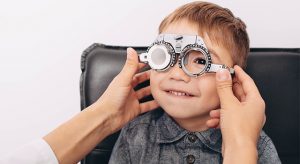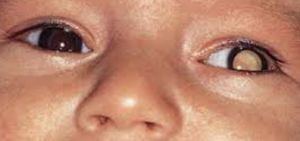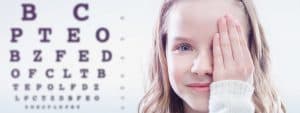Choroideremia is a rare genetic condition, causing severe vision loss beginning in childhood.
Choroideremia affects approximately 1 in 50,000 to 1 in 100,000 people, impacting males more than females.
What is Choroideremia?
Choroideremia is a genetic condition that causes damage and death to the retinal cells in the back of the eye by inhibiting nutrient absorption and waste excretion.
This attack on the retinal cells leads to gradual vision loss, beginning in childhood.
Symptoms of choroideremia
Early symptoms of choroideremia typically appear around ages 5 or 6, with night blindness being one of the first noticeable signs.
Many children report difficulty seeing at night and in low light environments, such as in a movie theater or restaurant.
An inability to see the stars in the sky is another common sign of this condition.
As choroideremia progresses, peripheral vision begins to deteriorate, resulting in ‘tunnel vision’ by around age 20. Over the next few decades, vision deterioration slows down but problems with depth perception, color perception and central vision will become more noticeable.
Total blindness typically occurs by age 60.
SEE RELATED: 7 Common Pediatric Eye Conditions
Contact an eye doctor near you if your child is showing signs of choroideremia or any other vision problem.
What causes choroideremia?
Choroideremia is an X-linked recessive genetic disorder. It can be inherited from an affected parent that has two copies of the mutated X gene, or from a mother who carries one copy of the X mutated gene.
This mutated gene sits on the X chromosome, making it more likely to impact males than females. Women who carry only one mutated X gene usually present with no symptoms until the healthy X chromosome begins to deactivate due to age.
Unfortunately, a cure or treatment for choroideremia has yet to be discovered. However, researchers are working to develop sustainable gene therapies to control disease progression and possibly reverse it.
How do low vision aids help?
Low vision aids are designed to help you maximize your remaining vision.
There are currently a large variety of low vision aids on the market— from low tech to high tech magnifiers and devices— so you can find a low vision aid that is most suitable for you and your individual needs.
Living with low vision can be both difficult and debilitating.
Low vision aids and devices can make reading, using a computer, driving, watching TV, cooking and other daily activities easier and more enjoyable.
Low vision aids can increase your independence for daily tasks and give you the quality of life you deserve.
LEARN MORE: Guide to Pediatric Eye Conditions
Schedule an appointment with an eye doctor near you to learn more about living with low vision.
If you are experiencing low vision, a low vision eye doctor understands you and can offer you a range of devices to help you live your life to the fullest.










